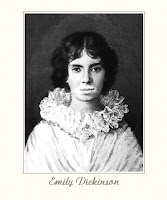I present the poem
Be Glad Your Nose is on Your Face by Jack Prelutsky
Be glad your nose is on your face,
not pasted on some other place,
for if it were where it is not,
you might dislike your nose a lot.
Imagine if your precious nose
were sandwiched in between your toes,
that clearly would not be a treat,
for you'd be forced to smell your feet.
Your nose would be a source of dread
were it attached atop your head,
it soon would drive you to despair,
forever tickled by your hair.
Within your ear, your nose would be
an absolute catastrophe,
for when you were obliged to sneeze,
your brain would rattle from the breeze.
Your nose, instead, through thick and thin,
remains between your eyes and chin,
not pasted on some other place--
be glad your nose is on your face!
not pasted on some other place,
for if it were where it is not,
you might dislike your nose a lot.
Imagine if your precious nose
were sandwiched in between your toes,
that clearly would not be a treat,
for you'd be forced to smell your feet.
Your nose would be a source of dread
were it attached atop your head,
it soon would drive you to despair,
forever tickled by your hair.
Within your ear, your nose would be
an absolute catastrophe,
for when you were obliged to sneeze,
your brain would rattle from the breeze.
Your nose, instead, through thick and thin,
remains between your eyes and chin,
not pasted on some other place--
be glad your nose is on your face!
PARAPHRASED!
Stanza 1
Just like the title , the poet starts of saying how lucky we are that our nose is on our face instead of somewhere else
Stanza 2
In the second stanza, the poet wants the reader to imagined what it would be like if our nose was placed between our toes. Then saying that it would a disaster because we have to smell our own foot
Stanza 3
Then, the poet said that it would also be dreadful if our nose is placed on top of our head as it would be tickel by our own hair
Stanza 4
Now, the poet wants his reader to realised that if our nose are inside our ear, whenever we sneezes it would certainly cause a lot of vibrations that could damaged our own brain
Stanza 5
In this final stanza the poet wants the reader to realised and be glad that our nose are on our face instead of other place.
FINAL SAY
After a few research i've found out that the poet is actually someone who wrote for little children which explains a lot on the humor that he brings in this poem
If youre not satisfied by my paraphrasing of this poem, please leave a comment and say how you think it should be done.
THANK YOU




